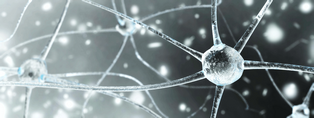Article contents
A deep learning approach to the inverse problem of modulus identification in elasticity
Published online by Cambridge University Press: 16 September 2020
Abstract

The inverse elasticity problem of identifying elastic modulus distribution based on measured displacement/strain fields plays a key role in various non-destructive evaluation (NDE) techniques used in geological exploration, quality control, and medical diagnosis (e.g., elastography). Conventional methods in this field are often computationally costly and cannot meet the increasing demand for real-time and high-throughput solutions for advanced manufacturing and clinical practices. Here, we propose a deep learning (DL) approach to address this challenge. By constructing representative sampling spaces of shear modulus distribution and adopting a conditional generative adversarial net, we demonstrate that the DL model can learn high-dimensional mapping between strain and modulus via training over a limited portion of the sampling space. The proposed DL approach bypasses the costly iterative solver in conventional methods and can be rapidly deployed with high accuracy, making it particularly suitable for applications such as real-time elastography and high-throughput NDE techniques.
- Type
- Article
- Information
- Copyright
- Copyright © Materials Research Society 2020
Footnotes
Non-destructive evaluation (NDE) of elastic modulus in materials has broad applications in fields such as geological exploration, quality evaluation, and medical diagnosis. A key to these techniques is to solve the inverse problem of identifying the distribution of elastic modulus. While conventional theories and numerical methods often involve solving multiple variational problems iteratively for each case, the demand of real-time response and high-throughput application of NDE is growing, especially for advanced manufacturing and clinical practices.
To address this challenge, we leverage some of the recent progress in data science and propose a deep learning (DL) approach to solve the inverse problem of modulus identification in elasticity. By designing the sampling spaces of smooth distribution of shear modulus and adopting a conditional generative adversarial net, we demonstrate that the DL approach is capable of learning high-dimensional mapping between distributions of strain and shear modulus via training over a limited portion of data. Also, the model can be rapidly deployed with high accuracy, bypassing the iterative solving process in the conventional methods. This work broadens the way of solving challenging inverse problems that aim for applications in real-time elastography and high-throughput NDE techniques.
References
- 34
- Cited by





